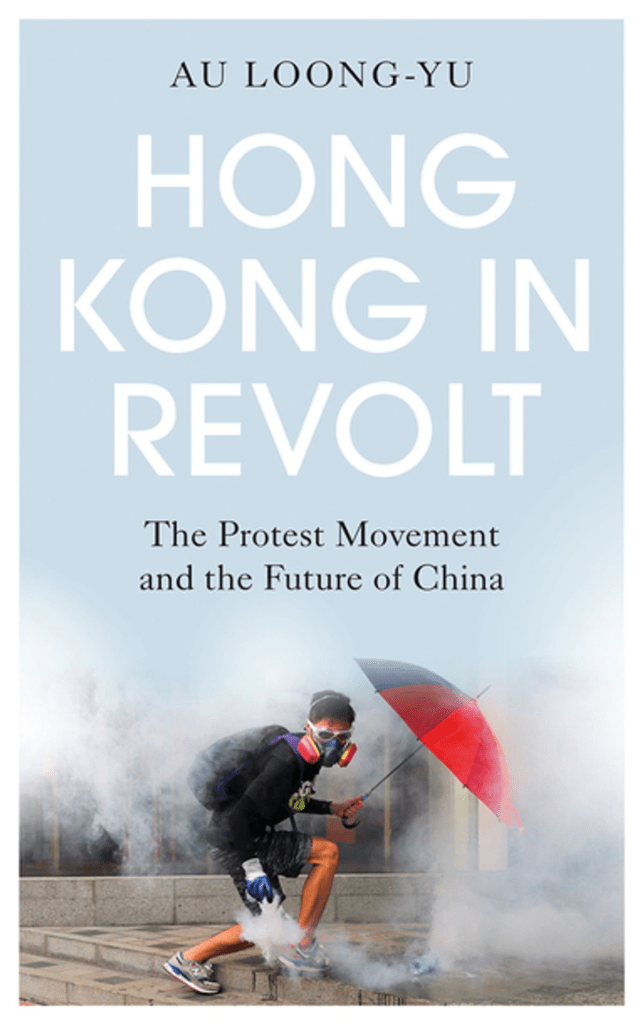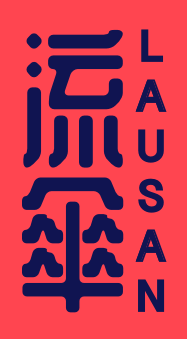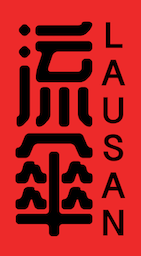
Against the popular perception that Hong Kong is good for nothing other than “laying golden eggs” for its colonial masters, Au Loong-yu’s fundamental assessment of Hong Kong’s past year is this: “For the first time its people have made the whole world listen… as millions of living, kicking human beings who aspire to freedom.” This deceptively simple statement encapsulates the historic shift in Hong Kong and China’s political terrain: For all the flaws and defeats of the movement, millions of Hongkongers are now ready to make themselves heard.
Yet, while the world was listening for much of last year, Western media’s overt interest in local calls for liberal democracy drowned out the numerous factions within the movement. The left, for example, is considered so marginal as to be non-existent. For the Anglosphere, it was often up to independent media to spread the word about leftist and progressive activism that mainstream media was all too ready to ignore. Hong Kong in Revolt (Pluto Press) is thus a critical and welcome voice, as the first English-language trade paperback book aimed at Western audiences to analyze the movement and its social, cultural, and political context from a left perspective. It answers a simple question: How did Hong Kong’s largest uprising in its history look through the eyes of a veteran leftist organizer (rather than to liberals or China Watchers)?
Au has been part of leftist organizing circles in Hong Kong for decades, and each page sparks with the energy of a seasoned agitator. He is at once hopeful but realistic, supportive but critical about what has happened—and what is still to happen—in Hong Kong this past long year. In this sense, he is the perfect person to write this chronicle, which accomplishes the feat of being both a broad, comprehensive overview of the movement and a deep drill-down into the essential details of on-the-ground material conditions.
One of the major strengths of Au’s analysis is its historical longview. He draws our attention to the generations of activists who fought a decade before Umbrella (defeating the 2003 proposed national security law, for example) and other important battles waged by progressive movements against capital in the region. While it is thrilling that 2019’s anti-establishment protests politicized millions and saw unprecedented levels of first-time protest participation, Au offers a glimpse into the constrictive social and historical conditions that explain why this long overdue mass politicization hadn’t happened sooner. One major reason, he argues, is Hong Kong’s “limited and elitist” post-war colonial education system and its grip on the Hong Kong psyche. Because colonial meritocracy took root, local ideas about political change differed radically from concurrent Third World nationalist movements and leftist student movements of the 50s and 60s. This critique of Hongkongers’ general investment in colonial institutions explains but does not excuse, as many do, the latent conservatism in many quarters of Hong Kong society.
While several single-authored commentaries on Hong Kong have come out in the past half year, some even while the movement was ongoing, Au’s perspective differs in its hard-nosed, leftist orientation. Not unaware of the global left’s reactions for and against the uprising in Hong Kong, he provides nuanced and critical analysis on contentious topics that have held the attention of the local resistance and possible comrades from around the world alike: What’s with all the US flags and Trump worship, and how can we understand the prominence of right-wing nativists in relation to the waning influence of centrists and leftists? How can we critique and organize against CCP colonialism without indulging in the excesses of a growing “anti-China” Sinophobic zeitgeist? Au does not proffer simple prescriptive answers, insisting that these are debates still to be had and particularly to be had in the doing, on the streets and in action.
In the pursuit of progressive change, it is necessary to examine the reasons for the emergence of reactionary elements and the damage they do to movement solidarity. Against the urge to simply cheerlead a movement, Au is unflinching in his critique: He tackles the “xenophobic localists” (viewed positively by the West while being active antagonists of the local left) rather than whitewashing their toxicity. In the face of an ever reductive Western media lens, Au insists that understanding every element of the movement and their local conditions of emergence is essential to properly understanding the successes and the setbacks of 2019.
Early on, after enumerating an extensive glossary of on-the-ground vocabulary employed by the “braves” (frontliners), he zeroes in on a seeming contradiction: Frontliners and their supporters embodied the improvisational “Be Water” ethos, a notable change from the region’s past uprisings—but, Au asks, didn’t they also refuse the command structures and hierarchy necessary to develop such a detailed framework for communication? His answer: “Something in-between was true.” This turns out to be a recurring sentiment throughout the book: Au is able to examine elements, actors, and concepts that defined the movement from multiple different angles, and conclude that a singular answer is neither desirable nor possible within Hong Kong’s multiply-colonized, contradictory political scene. Commentators outside Hong Kong across the political spectrum have attempted to oversimplify the complexities on the ground in order to confirm their own political biases in myriad ways; Hong Kong in Revolt is a much needed reminder that one of the defining characteristics of Hong Kong is the inability of most existing frameworks to describe the dynamics of this capitalist port city caught between empires.
Au spends considerable time detailing the historical forces that have caused labor action to fail, including fear of reprisal, organizational weakness, and what he identifies as radical youths’ poor strategy and connection to working-class people. But labor also made great strides in 2019: A groundswell of union organizing emerged during the protests after government reprisals against the Cathay Pacific employee union for their participation in protests. Au notes that the new union movement is split between those using unions to gain a vote for Chief Executive in LegCo (that is, not organizing on the basis of class at all and doing “the opposite of building a strong union,” in Au’s words) and those who are unionizing to build labor power. While he ponders whether “tiny unions which lack real strength” will be the eventual outcome of the new movement, as a veteran labor organizer, he nevertheless argues that this is a critical new front of resistance for building power in Hong Kong.
Focusing not just on the movement of 2019, Au’s narrative is a chronicle of a longer history of resurgent social movements. Spending a good amount of time fleshing out the social and cultural elements that defined both 2014’s Umbrella Movement and its relationship to the 2019 movement from a local, participant, and researcher’s perspective provides critical context for anyone hoping to understand how a simple extradition bill sparked a year of protest. Yet Au’s immense breadth of knowledge also ends up being one of the inevitable drawbacks of the book. The ambition of this historical coverage becomes apparent when the book turns to in-depth study of the other momentous events that roiled Hong Kong in 2020: COVID-19, and the ramping up of Trump and Xi’s “new Cold War.” Added to this, the social scientific granularity, a hallmark of Hong Kong studies, sometimes slows the pace of an otherwise brisk narrative, especially for newcomers who may not quite understand the relevance of, for example, Legislative Council inside baseball.
Paradoxically, then, the only addition I hoped for was more. It is already quite a feat to fit so much detailed history and analysis into the slim volume, a mere 177 pages. In most cases, Au’s concision is welcome as he is quick to sharpen his points before moving on. In a few cases, however, this economy with words bumps up against the breadth of his understanding of the movement. In a section detailing the various actors in the movement, for example, Au, as any good leftist does, turns the spotlight to marginalized and otherwise ignored voices. But by titling a section “Women and minorities’ participation,” there is a risk of not only solidifying this marginalization on a discursive level but of implying that the various groups (including priests, senior citizens, migrant domestic workers, LGBT, and other ethnic minorities) are marginalized in the same way, not to mention the considerable overlap between some of these categories. Of course, this is not the intention of Au’s inclusion of these groups, but such populations are integral to the movement and society at large, and deserve either more or less space on the page, rather than the middling approach we are given.
Beyond this book, there is a clear conceptual understanding of the 2019 protests as driven by a “core” of protesters—made up of the majoritarian categories of the cis, straight, Han, legally resident, male Hongkonger—outside of which fall various other “stakeholders.” Self-styled pragmatists often see engaging with the critical social analysis that racialized, queer, and feminist Hongkongers have forwarded for decades as jor gau (左膠) or lei dei (離地)—in short, a distraction.1 Ceding to this thinking means that this “invisible Big Stage” (無大台) of the normative Hong Kong subject will only sediment further.2 These social attitudes inevitably shape our goals, tactics, and (what I believe will be) our eventual victories, mirroring Hong Kong society’s current injustices. In being true to a decentralized “Be Water” ethos, it is incumbent on us to refuse this model of core/margin and organize in a way that allows all to be and to resist as “a Hongkonger.”
This quibble aside, Au’s assured narrative guides the reader through an astounding number of scenes and topics, giving a sense of just how chaotic this year has been for Hongkongers. Broken into helpful conceptual sections titled “actors,” “events” and “issues,” and bookended by more macro-level analyses, including a final chapter entitled “The Dragon, Goose, and the Coronavirus,” the book brings us right up to current events of summer 2020. There is even room for a brief analysis of the National Security Law in June 2020. In this way, Au’s sweeping range acts as a critical jumping-off point for those just coming to Hong Kong politics as well as those who want a brief but trenchant overview of the past and still rapidly evolving uprising.
While those who followed livestreams and Twitter feeds daily may feel as if they have nothing left to learn from these broader perspectives on the movement, only in reading the book does one realize how little time many of us were given to process before the next development hit and the cycle began anew. Hong Kong in Revolt is thus a valuable condensation of what were otherwise disparate and overwhelming waves of data and news items. In Au, activists can find a comrade to identify and process with, one that is careful but righteous in his critique.
Au ends on a cautiously optimistic note: Turning to the resurgence of Black Lives Matter in the wake of the murder of George Floyd by Minneapolis police, he argues that the Black struggle offers both a rebuke and what should be an awakening to the Hongkongers who wave US flags and believe in the perfection of US liberal democracy. As a leftist, Au reminds us that a truly international anti-racist and anti-capitalist solidarity is what the US—and China—most fears. That future is yet to be written, but Au’s analysis prepares us well to do it.
Au Loong-yu is a veteran leftist organizer in Hong Kong. He is the author of China’s Rise: Strength and Fragility (Merlin Press, 2012) and a founder of both Borderless Movement (無國界社運) and Globalization Monitor (全球化監察), a Hong Kong based group which monitors China’s labor conditions.
Footnotes
- Jor gau (左膠) is a derogatory Cantonese catchphrase for people who are left ideologically and unstrategic practically. It first became popular as a derogatory phrase against certain protestors who object to any form of escalation and radical action. In the context of politics, lei dei (離地) is a term of derision used to characterize certain strategies or arguments as out of touch, unpragmatic, or too “academic.”
- In contrast to the Umbrella Movement, which was largely directed by political parties and figures who occupied a leadership platform, No Big Stage (無大台) refers to the decentralized, “leaderful” ethos of the 2019 movement. In the context of this review, the “invisible Big Stage” refers to the often unrecognized but powerful influence of the majoritarian Hongkonger socio-cultural identity in shaping discourse and action throughout the protests.




